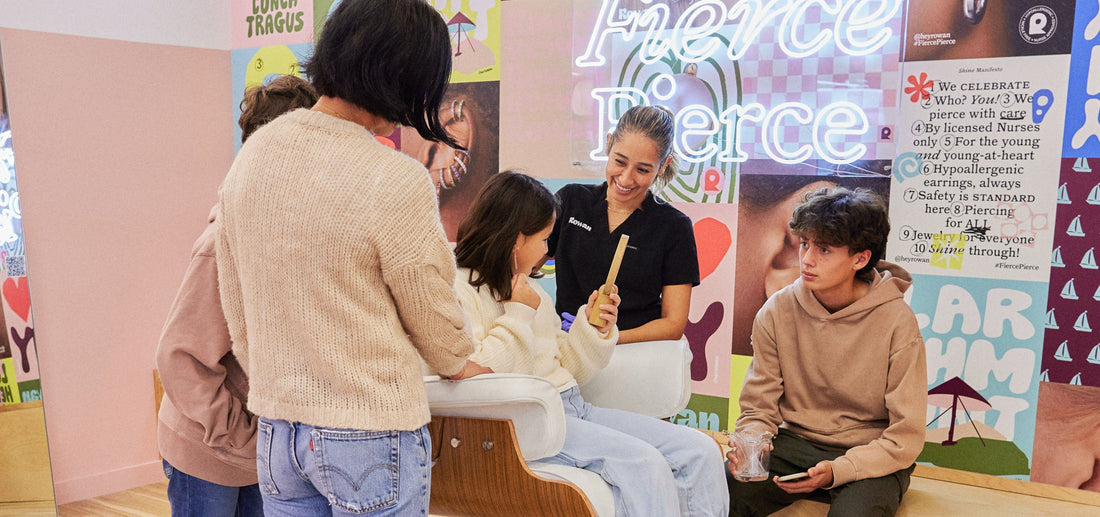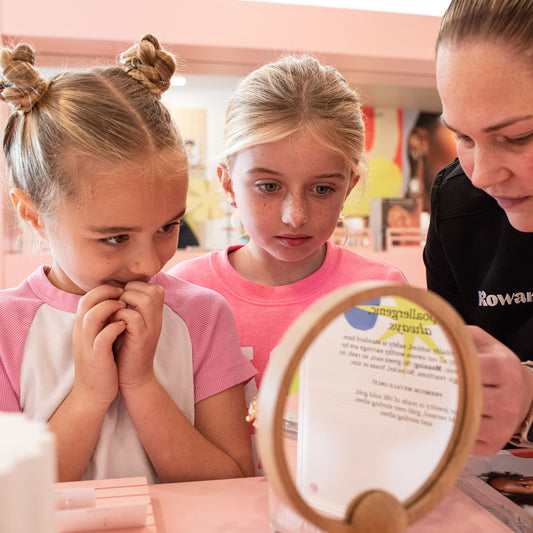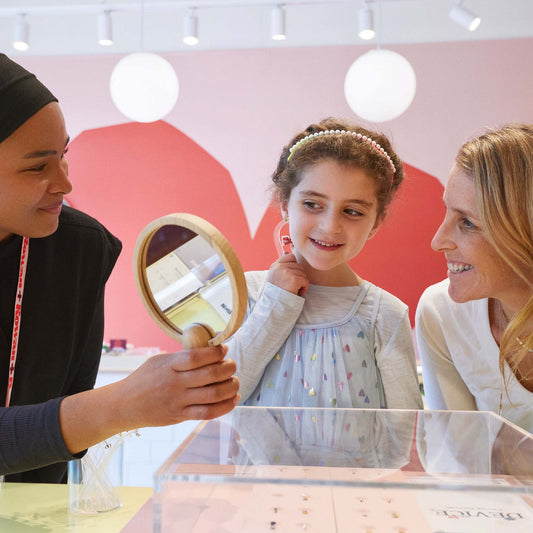Ear Piercing Safety 101: Here's What To Consider
What’s the 411 on piercing safety?

Ear piercing is a milestone that transcends culture, religion, age, and gender - but that doesn’t mean there aren’t questions, especially when you are a parent making this decision for a minor.
Here’s everything you need to consider to make sure you have the safest piercing experience.
Medical Safety
At Rowan, our licensed nurses follow the American Academy of Pediatric guidelines, which recommend piercings wait until the child has started their DTaP vaccination series to prevent the risk of a tetanus infection.
Modality
Device piercings are performed with a hand-pressurized device which is in complete control of the nurse’s hand to guide, position, and pierce safely. It is nothing like a piercing gun. This method can be used for any piercing placement along the outer perimeter of the ear and utilizes butterfly or bell back earrings, which make the jewelry easier to change once the piercing has healed.
Device piercings are available to anyone 2 months or older with a valid DTaP vaccination. The DTaP vaccine is required until the age of 5.
Needle piercings are performed with a single-use, hollow bore sterilized needle. The needle piercing method can be used for any piercing placement in the ear and utilizes flat backs specifically designed for optimal comfort and healing.
Needle piercing jewelry is compatible with interchangeable posts of different lengths. A person with very thick ear tissue or a history of excessive swelling with previous piercings may find needle piercing to be ideal to accommodate their anatomy.
Children may be able to get their lobes pierced via needle as young as 5 years old unless otherwise stated by local or state regulations.
Product
What you put into your piercing is equally important as the piercing itself. All of our earrings are hypoallergenic to minimize the chances of allergic reaction to different types of metals and help the piercing heal safely.
It is recommended that the piercing earring remain in the piercing for 6-8 weeks. After that time, it is recommended that an earring remain in the piercing for at least one year to prevent closures.
Ready to Visit?
Our goal is to provide the best experience possible through this rite of passage. By providing the best services and evidence-based knowledge, this experience is also safe and effective.



